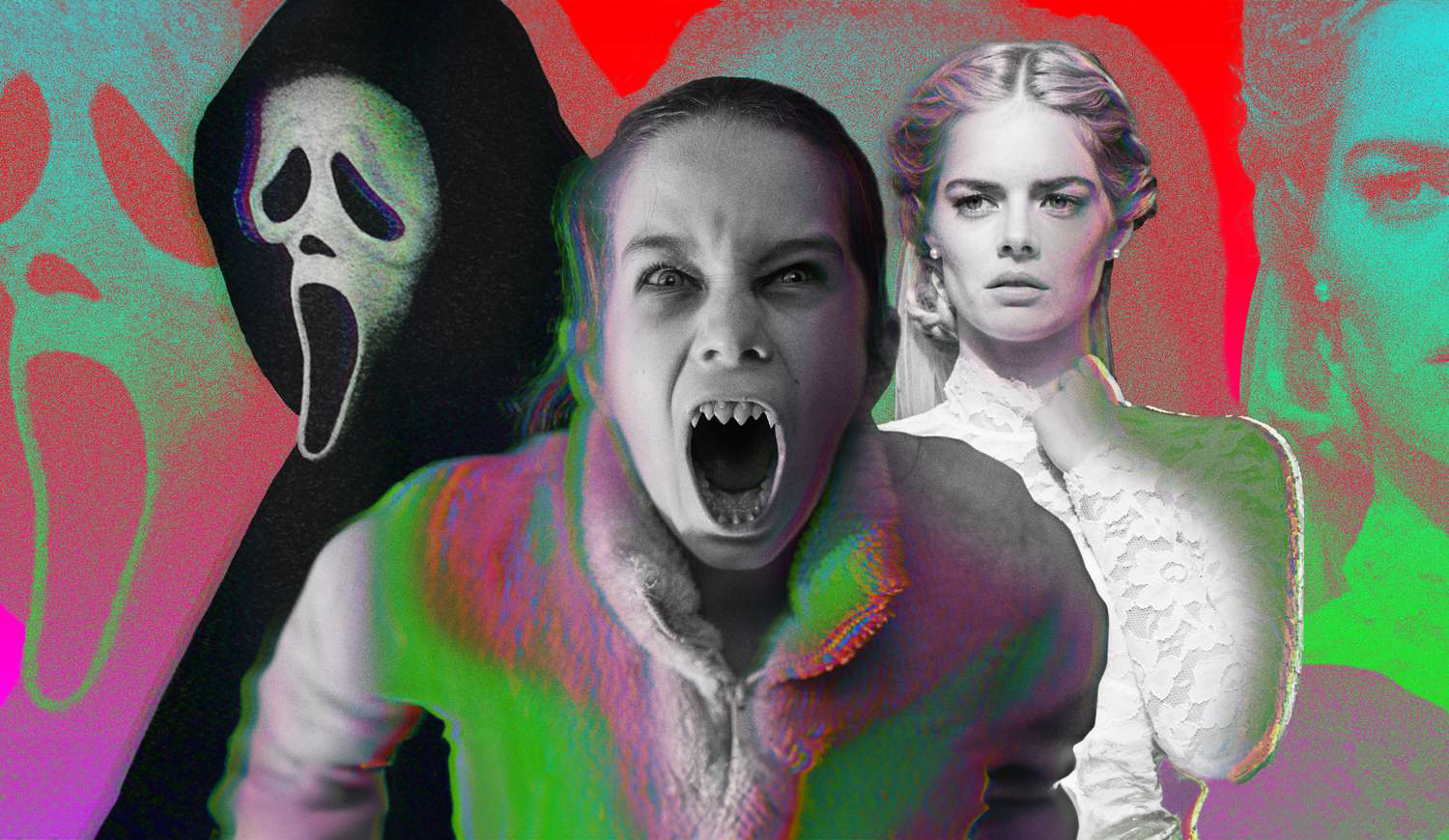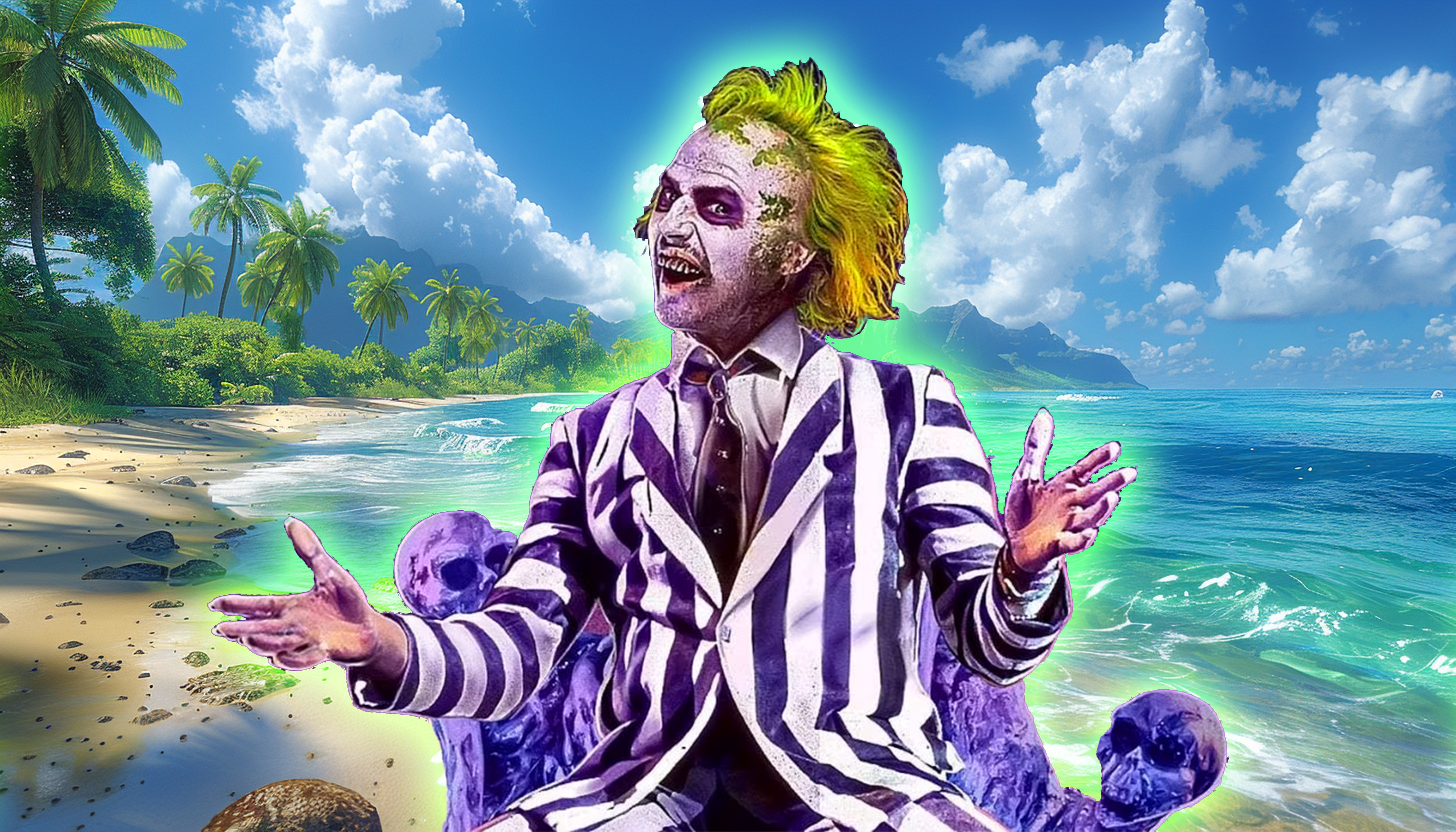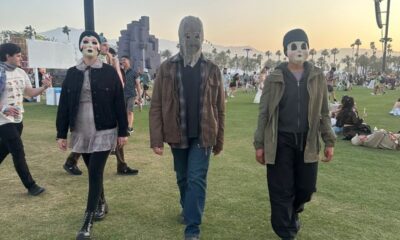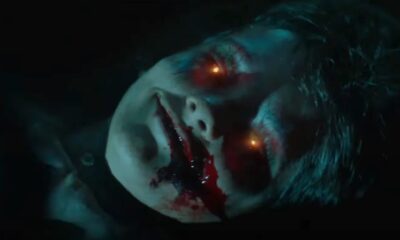News
Exclusive: Catching Up With White Zombie’s J. Yuenger
Last week, I posted an in-depth tribute to the classic White Zombie album Astro-Creep: 2000 – Songs of Love, Destruction, and Other Synthetic Delusions of the Electric Head to celebrate its 20th anniversary. I managed to get the attention of guitarist J. Yuenger who these days works at Waxwork Records, which has released beautiful vinyl records for classic horror scores such as Re-Animator, Rosemary’s Baby, Day of the Dead, Creepshow, Chopping Mall, Trick ‘R Treat, Friday the 13th and Phase IV. Lately, Yuenger has been working on a release of the score from last year’s Starry Eyes.
I had the opportunity to ask him a few questions, so read on if you want to learn more about what he’s been up to, his feelings about White Zombie and Astro-Creep after all these years, and his favorite horror movies.
iHorror: Give us a brief rundown of your career between White Zombie and now. What have you enjoyed doing the most in that time?
JY: After the band broke up, I toyed with the idea of being in another group – for a very short period. I realized pretty quickly that I had, so to speak, won the lottery, and that I should probably quit playing while I was ahead.
I cut my hair off, bought a house, got married. Band members seem to either love or hate being in the studio, and I really, really loved it, which led to me diving into recording and engineering, buying a lot of gear, outfitting a succession of spaces as recording studios. I have (up until the last couple of years, where, totally unexpectedly, mastering has taken up all my time) worked with a variety of artists and made a bunch of different kinds of records.
A couple of years into the 2000s, I realized that the normal life I’d thought I wanted was not only boring, but actually kind of bewildering to me – so I sold the house, got divorced, and moved to New Orleans just in time for Hurricane Katrina.
iH: Tell us about what you do exactly at Waxwork. Give those of us who aren’t super familiar with the recording industry a basic rundown of how you contribute to a record.
JY: The analogy I usually use when I need to describe to someone what I do is this : you know how someone who works in the art department at a newspaper might photoshop an image to bring out the detail? Better yet, maybe : you know how a technician working in post on a film will color-correct the footage to make the various film stocks flow together and look like they’re in the same movie? That’s what I do, but with sound. That’s ‘mastering’.
The stuff Waxwork puts out is often material that’s never been released before, coming straight off of tapes which have been in storage 20-30-40 years. A lot of times, those tapes are deteriorating and the sound is in need of restoration. Sometimes it’s material that was never intended to be heard outside of the film, and there needs to be a lot of (tasteful) editing. A big part of the work is helping to figure out how to present the material to the public.
iH: I understand Waxwork is readying a release of the score from Starry Eyes. How’s that been going?
JY: Great. Jonathan Snipes, the composer, has signed off on the test pressing and the record’s in production. Also, this is the first Waxwork release where buyers of the LP will get a free download card.
Personally, I’m excited about this one because I like it. What I mean is, sometimes, a soundtrack album remains very tied to the film it’s from – this record, though, works very well as a standalone album. If you haven’t seen Starry Eyes yet, you can still really enjoy the music. I like the sounds a lot (he’s using analog synths instead of computer emulations), and there are some really great melodies.
https://www.facebook.com/waxworkrecords/posts/2239864799486088
iH: What other projects are you currently working on either with Waxwork or otherwise?
JY: The forthcoming White Zombie vinyl box set is one, but I can’t tell you too much about it because there’s a lot of work left to do, production and otherwise. Suffice to say that Sean Yseult and I have put a lot of time, energy, and our archives into this, and hopefully it’ll include a lot of stuff nobody’s ever heard.
So far this year, I’ve done work for a couple of labels (Domino Sound, Last Hurrah, St.Roch Recordings, Numero Group). With Waxwork, there’s a ton of cool releases coming up : C.H.U.D., which has never been released in any form, Friday The 13th Part 2, Popul Vuh’s great score for Werner Herzog’s Nosferatu, Clive Barker’s Nightbreed, and The Warriors – not only the original album from the original tapes, but a fancy double record set including the complete score, which has never been released.
iH: What’s a horror movie soundtrack you’d really like to get your hands on?
JY: The Abominable Dr. Phibes, the original 1973 pressing. I can’t tell you how much I love that movie. The album’s really rare, and I know I could just go online and pay the going rate to have it, but I keep thinking I’m going to find it in the flesh somewhere unexpected. That’s what keeps record collecting fun, you know?
Also, I don’t imagine people think of it as a horror movie, but I do : Ben Wheatley’s 2013 film A Field In England— there’s a beautiful vinyl release of the score, which they made 400 of, and I’ll probably never get one.
iH: So Astro-Creep is 20 years old. Are you still happy with it? Anything you’d change or wish you’d done differently?
JY: Not really. I mean, some of the loops and sample sounds are kind of dated (for the time being, but these things have a way of rotating in and out of fashion), but, honestly, everyone involved was working at the edge of their ability to make it the coolest record possible, and that continues to show. I’m far enough removed from the process now that I can really appreciate not only my part of it, but the total work of art.
iH: What do you miss most about your days in White Zombie?
JY: I get this question all the time, and the answer is ‘touring’. Travel’s always been in my blood, so I took to touring very easily, which a lot of people don’t. I look at my friends in bands and I kind of miss the gypsy lifestyle, although I travel a lot – on my own terms, and I go to some challenging places, so that’s okay.
iH: What was your most memorable tour?
JY: The first two : USA, Summer, 1989, right after I joined the band, and then Europe, Winter 1989-1990. We were living on about $5.00 a day, sleeping on floors, and the stories are insane. When I start thinking about it, I think, “we could write a book”. Maybe we will. Life gets a lot more comfortable when you move up to a tour bus, but the stories stop.
iH: What are some of your favorite horror movies?
I have a great fondness for the films of my childhood – the horror classics of the 80s, the Italians, and the low-budget slasher flicks I watched over and over in dollar theaters when I was a teenager, but to be honest, I think the scariest fucking movie of all time is still The Exorcist. I really believe it, and I get something new out of it every time I see it. My parents wouldn’t let me watch the film, and I was always resentful of that, and then I managed to see a scratched-up print at a particularly skanky theater on the north-west side of Chicago when I was 15, and I was like, “oh..”.
My favorite movie of all time just might be Nobuhiko Obayashi’s House, which is, again, maybe not strictly a horror movie, but if you needed to compare it to another film, that film would probably be Evil Dead.
…
You can follow J. on his blog at JYuenger.com
'Civil War' Review: Is It Worth Watching?
Follow our new YouTube channel "Mysteries and Movies" here.

Lists
Thrills and Chills: Ranking ‘Radio Silence’ Films from Bloody Brilliant to Just Bloody

Matt Bettinelli-Olpin, Tyler Gillett, and Chad Villella are all filmmakers under the collective label called Radio Silence. Bettinelli-Olpin and Gillett are the primary directors under that moniker while Villella produces.
They have gained popularity over the past 13 years and their films have become known as having a certain Radio Silence “signature.” They are bloody, usually contain monsters, and have breakneck action sequences. Their recent film Abigail exemplifies that signature and is perhaps their best film yet. They are currently working on a reboot of John Carpenter’s Escape From New York.
We thought we would go through the list of projects they have directed and rank them from high to low. None of the movies and shorts on this list are bad, they all have their merits. These rankings from top to bottom are just ones we felt showcased their talents the best.
We didn’t include movies they produced but didn’t direct.
#1. Abigail
An update to the second film on this list, Abagail is the natural progression of Radio Silence’s love of lockdown horror. It follows in pretty much the same footsteps of Ready or Not, but manages to go one better — make it about vampires.
#2. Ready or Not
This film put Radio Silence on the map. While not as successful at the box office as some of their other films, Ready or Not proved that the team could step outside their limited anthology space and create a fun, thrilling, and bloody adventure-length film.
#3. Scream (2022)
While Scream will always be a polarizing franchise, this prequel, sequel, reboot — however you want to label it showed just how much Radio Silence knew the source material. It wasn’t lazy or cash-grabby, just a good time with legendary characters we love and new ones who grew on us.
#4 Southbound (The Way Out)
Radio Silence tosses their found footage modus operandi for this anthology film. Responsible for the bookend stories, they create a terrifying world in their segment titled The Way Out, which involves strange floating beings and some sort of time loop. It’s kind of the first time we see their work without a shaky cam. If we were to rank this entire film, it would remain at this position on the list.
#5. V/H/S (10/31/98)
The film that started it all for Radio Silence. Or should we say the segment that started it all. Even though this isn’t feature-length what they managed to do with the time they had was very good. Their chapter was titled 10/31/98, a found-footage short involving a group of friends who crash what they think is a staged exorcism only to learn not to assume things on Halloween night.
#6. Scream VI
Cranking up the action, moving to the big city and letting Ghostface use a shotgun, Scream VI turned the franchise on its head. Like their first one, this film played with canon and managed to win over a lot of fans in its direction, but alienated others for coloring too far outside the lines of Wes Craven’s beloved series. If any sequel was showing how the trope was going stale it was Scream VI, but it managed to squeeze some fresh blood out of this nearly three-decade mainstay.
#7. Devil’s Due
Fairly underrated, this, Radio Silence’s first feature-length film, is a sampler of things they took from V/H/S. It was filmed in an omnipresent found footage style, showcasing a form of possession, and features clueless men. Since this was their first bonafide major studio job it’s a wonderful touchstone to see how far they have come with their storytelling.
'Civil War' Review: Is It Worth Watching?
Follow our new YouTube channel "Mysteries and Movies" here.
News
Perhaps the Scariest, Most Disturbing Series of The Year

You may have never heard of Richard Gadd, but that will probably change after this month. His mini-series Baby Reindeer just hit Netflix and it’s a terrifying deep dive into abuse, addiction, and mental illness. What is even scarier is that it’s based on Gadd’s real-life hardships.
The crux of the story is about a man named Donny Dunn played by Gadd who wants to be a stand-up comedian, but it’s not working out so well thanks to stage fright stemming from his insecurity.
One day at his day job he meets a woman named Martha, played to unhinged perfection by Jessica Gunning, who is instantly charmed by Donny’s kindness and good looks. It doesn’t take long before she nicknames him “Baby Reindeer” and begins to relentlessly stalk him. But that is just the apex of Donny’s problems, he has his own incredibly disturbing issues.
This mini-series should come with a lot of triggers, so just be warned it is not for the faint of heart. The horrors here don’t come from blood and gore, but from physical and mental abuse that go beyond any physiological thriller you may have ever seen.
“It’s very emotionally true, obviously: I was severely stalked and severely abused,” Gadd said to People, explaining why he changed some aspects of the story. “But we wanted it to exist in the sphere of art, as well as protect the people it’s based on.”
The series has gained momentum thanks to positive word-of-mouth, and Gadd is getting used to the notoriety.
“It’s clearly struck a chord,” he told The Guardian. “I really did believe in it, but it’s taken off so quickly that I do feel a bit windswept.”
You can stream Baby Reindeer on Netflix right now.
If you or someone you know has been sexually assaulted, please contact the National Sexual Assault Hotline at 1-800-656-HOPE (4673) or go to rainn.org.
'Civil War' Review: Is It Worth Watching?
Follow our new YouTube channel "Mysteries and Movies" here.
Movies
The Original ‘Beetlejuice’ Sequel Had an Interesting Location

Back in the late ’80s and early ’90s sequels to hit movies weren’t as linear as they are today. It was more like “let’s re-do the situation but in a different location.” Remember Speed 2, or National Lampoon’s European Vacation? Even Aliens, as good as it is, follows a lot of the plot points of the original; people stuck on a ship, an android, a little girl in peril instead of a cat. So it makes sense that one of the most popular supernatural comedies of all time, Beetlejuice would follow the same pattern.
In 1991 Tim Burton was interested in doing a sequel to his 1988 original, it was called Beetlejuice Goes Hawaiian:
“The Deetz family moves to Hawaii to develop a resort. Construction begins, and it’s quickly discovered that the hotel will be sitting on top of an ancient burial ground. Beetlejuice comes in to save the day.”
Burton liked the script but wanted some re-writes so he asked then-hot screenwriter Daniel Waters who had just got done contributing to Heathers. He passed on the opportunity so producer David Geffen offered it to Troop Beverly Hills scribe Pamela Norris to no avail.
Eventually, Warner Bros. asked Kevin Smith to punch up Beetlejuice Goes Hawaiian, he scoffed at the idea, saying, “Didn’t we say all we needed to say in the first Beetlejuice? Must we go tropical?”
Nine years later the sequel was killed. The studio said Winona Ryder was now too old for the part and an entire re-cast needed to happen. But Burton never gave up, there were a lot of directions he wanted to take his characters, including a Disney crossover.
“We talked about lots of different things,” the director said in Entertainment Weekly. “That was early on when we were going, Beetlejuice and the Haunted Mansion, Beetlejuice Goes West, whatever. Lots of things came up.”
Fast-forward to 2011 when another script was pitched for a sequel. This time the writer of Burton’s Dark Shadows, Seth Grahame-Smith was hired and he wanted to make sure the story wasn’t a cash-grabbing remake or reboot. Four years later, in 2015, a script was approved with both Ryder and Keaton saying they would return to their respective roles. In 2017 that script was revamped and then eventually shelved in 2019.
During the time the sequel script was being tossed around in Hollywood, in 2016 an artist named Alex Murillo posted what looked like one-sheets for a Beetlejuice sequel. Although they were fabricated and had no affiliation with Warner Bros. people thought they were real.
Perhaps the virality of the artwork sparked interest in a Beetlejuice sequel once again, and finally, it was confirmed in 2022 Beetlejuice 2 had a green light from a script written by Wednesday writers Alfred Gough and Miles Millar. The star of that series Jenna Ortega signed on to the new movie with filming starting in 2023. It was also confirmed that Danny Elfman would return to do the score.
Burton and Keaton agreed that the new film titled Beetlejuice, Beetlejuice wouldn’t rely on CGI or other other forms of technology. They wanted the film to feel “handmade.” The film wrapped in November 2023.
It’s been over three decades to come up with a sequel to Beetlejuice. Hopefully, since they said aloha to Beetlejuice Goes Hawaiian there has been enough time and creativity to ensure Beetlejuice, Beetlejuice will not only honor the characters, but fans of the original.
Beetlejuice, Beetlejuice will open theatrically on September 6.
'Civil War' Review: Is It Worth Watching?
Follow our new YouTube channel "Mysteries and Movies" here.
-

 News6 days ago
News6 days agoWoman Brings Corpse Into Bank To Sign Loan Papers
-

 News7 days ago
News7 days agoHome Depot’s 12-Foot Skeleton Returns with a New Friend, Plus New Life-Size Prop from Spirit Halloween
-

 News5 days ago
News5 days agoBrad Dourif Says He’s Retiring Except For One Important Role
-

 Strange and Unusual5 days ago
Strange and Unusual5 days agoMan Arrested for Allegedly Taking a Severed Leg From Crash Site And Eating It
-

 Movies6 days ago
Movies6 days agoPart Concert, Part Horror Movie M. Night Shyamalan’s ‘Trap’ Trailer Released
-

 Movies7 days ago
Movies7 days ago‘The Strangers’ Invaded Coachella in Instagramable PR Stunt
-

 Movies6 days ago
Movies6 days agoAnother Creepy Spider Movie Hits Shudder This Month
-

 Movies7 days ago
Movies7 days agoRenny Harlin’s Recent Horror Movie ‘Refuge’ Releasing in U.S. This Month


















You must be logged in to post a comment Login